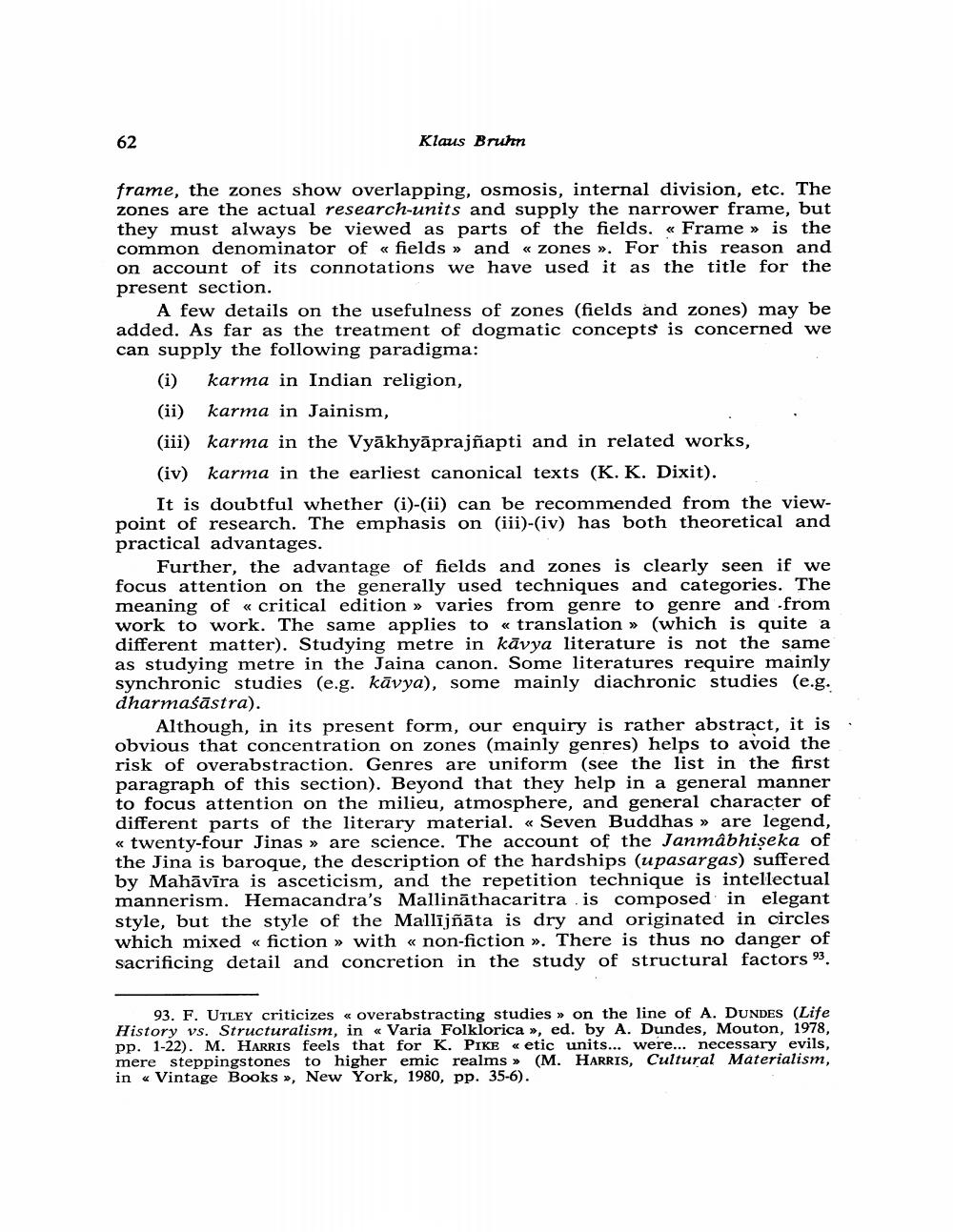________________
Klaus Bruhn
frame, the zones show overlapping, osmosis, internal division, etc. The zones are the actual research-units and supply the narrower frame, but they must always be viewed as parts of the fields. «Frame » is the common denominator of <fieldsand < zones ». For this reason and on account of its connotations we have used it as the title for the present section.
A few details on the usefulness of zones (fields and zones) may be added. As far as the treatment of dogmatic concepts is concerned we can supply the following paradigma:
(i) karma in Indian religion, (ii) karma in Jainism, (iii) karma in the Vyākhyāprajñapti and in related works, (iv) karma in the earliest canonical texts (K. K. Dixit).
It is doubtful whether (i)-(ii) can be recommended from the viewpoint of research. The emphasis on (iii)-(iv) has both theoretical and practical advantages.
Further, the advantage of fields and zones is clearly seen if we focus attention on the generally used techniques and categories. The meaning of « critical edition » varies from genre to genre and from work to work. The same applies to translation » (which is quite a different matter). Studying metre in kāvya literature is not the same as studying metre in the Jaina canon. Some literatures require mainly synchronic studies (e.g. kāvya), some mainly diachronic studies (e.g. dharmaśāstra).
Although, in its present form, our enquiry is rather abstract, it is. obvious that concentration on zones (mainly genres) helps to avoid the risk of overabstraction. Genres are uniform (see the list in the first paragraph of this section). Beyond that they help in a general manner to focus attention on the milieu, atmosphere, and general character of different parts of the literary material. « Seven Buddhas » are legend, « twenty-four Jinas » are science. The account of the Janmabhiseka of the Jina is baroque, the description of the hardships (upasargas) suffered by Mahāvīra is asceticism, and the repetition technique is intellectual mannerism. Hemacandra's Mallināthacaritra is composed in elegant style, but the style of the Mallījñāta is dry and originated in circles which mixed « fiction >> with « non-fiction ». There is thus no danger of sacrificing detail and concretion in the study of structural factors 93.
93. F. UTLEY criticizes « overabstracting studies on the line of A. DUNDES (Life History vs. Structuralism, in « Varia Folklorica », ed. by A. Dundes, Mouton, 1978, pp. 1-22). M. HARRIS feels that for K. PIKE «etic units... were... necessary evils, mere steppingstones to higher emic realms » (M. HARRIS, Cultural Materialism, in «Vintage Books », New York, 1980, pp. 35-6).




